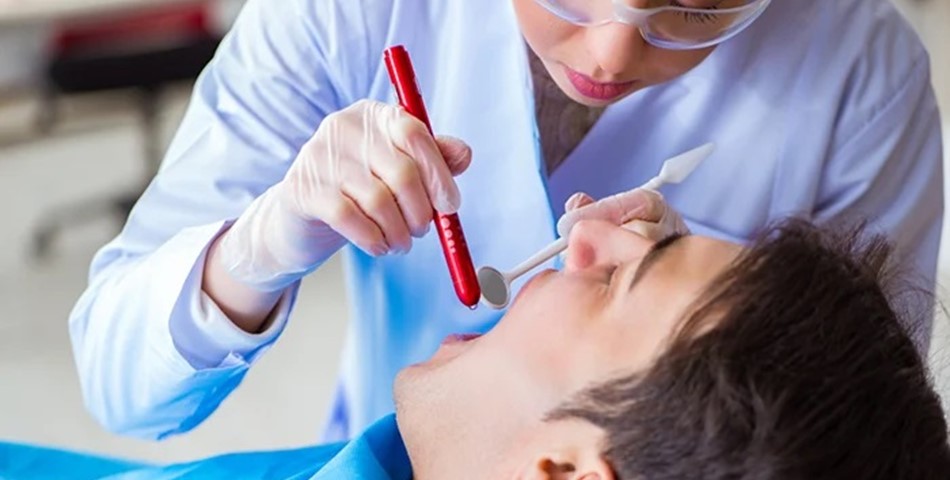The humble penlight is an important diagnostic tool for any medical professional to have on hand when they’re working. These specialized flashlights are bright, portable, convenient and indispensable (whether they’re reusable or disposable). Choosing a penlight may seem like a simple decision at first, but as you start browsing, you’ll quickly realize how many choices you have.
To help you choose the best nursing penlight, we put together the ultimate guide. Below, we explain what a penlight is and outline its many benefits. Then we cover what a penlight is used for before diving into your options (metal or plastic? halogen or LED light bulb? the list goes on!). Finally, we’ll highlight some of our most popular penlight models to conclude the guide.
Without further ado, here’s everything you need to know to purchase the best penlight:
What Is a Penlight?
As the name suggests, a penlight is a miniature flashlight that is shaped like a pen. It normally measures around 5-6 inches long and runs on AA or AAA batteries. Penlights are made with either miniature halogen lightbulbs or LED (light-emitting diode) bulbs. Unlike a regular flashlight, which illuminates a wider area, penlights are designed to illuminate one very specific area with a bright light. Penlights for nurses and other medical practitioners are usually used as a diagnostic tool. Some other professions, such as policemen and mechanics, also use penlights in their line of work.
Benefits of a Penlight
So, why do nurses, doctors and other medical professionals love penlights so much? These tiny-yet-mighty tools offer several advantages over a traditional, larger flashlight, including:
- Easy to carry: Because they are, quite literally, the size of a pen, penlights are lightweight and can be tucked into your pocket and carried around all day. They weigh so little you won’t even know you’re carrying them, and the slim profile won’t stretch out the fabric of your scrubs or lab coat pocket.
- Ability to fit into small spaces: Penlights can be used to assess symptoms in the mouth and throat, a relatively small area where it would be difficult to fit a regular-sized flashlight. In fact, some penlights even have a tongue depressor attached to them to better help you peer down the throat.
- Targeted illumination: Even in a brightly-lit doctor’s office, plenty of areas of the body—such as the ears, mouth and throat—will still be obscured by shadows. Penlights allow you to illuminate the areas you need to examine, when you need to examine them, and nothing else.
- Perfect level of brightness: If you’ve ever shined a regular flashlight right into your eyes, you’ve probably been temporarily blinded by it. That’s because the flashlight produced more lumens than your eyes can handle. Lumens are the unit that measures the amount of brightness produced by the light. (Lumens are not to be confused with watts, which is the amount of energy it takes to power the light.) Penlights are designed to provide the perfect amount of lumens to provoke a pupil response in patients, but not so much that it compromises their ability to see.
How to Use a Penlight
Medical professionals use penlights for several important tasks while they’re on shift. If you’re a nurse, doctor or other medical professional, here’s what you’ll use your penlight for:
Assessing pupil response: The main purpose of a penlight is to assess pupil response, or how fast the pupils constrict when suddenly exposed to a bright light. Medical professionals will often swing the penlight from eye to eye as well, making sure that both pupils constrict the same amount and that both eyes react regardless of which one is being exposed to the light. Abnormal pupil response can be symptomatic of many conditions, including concussions, alcohol intoxication, drug use and injury to or disease of the eyes and their nerves.
Examining wounds or the mouth/throat area: Even in a brightly-lit doctor’s office, the overhead light might not be strong enough to illuminate any wounds or injuries for a full assessment. And the overhead lights definitely aren’t at the right angle to illuminate the patient’s mouth and throat if they’ve got (say) the flu—but a penlight is the perfect size and shape to examine those areas quickly.
Illuminating a patient’s room: If patients are sick enough to stay in the hospital overnight, they’ll probably need to be checked on during the night. Using your penlight to illuminate the room instead of turning on the overhead lights is a courteous way to check on patients and reduce your chances of waking them up unnecessarily.
Looking through drawers: You never know when you might have to search through a dark cabinet or crowded drawer for clinical supplies. A penlight will give you the illumination you need to see into dark nooks and crannies and locate the right item quickly.
Different Types of Penlights
While a penlight may seem like the simplest of tools, there are actually several major factors you should consider as you shop for your next favorite penlight. These choices are more personal preference than a question of “right” or “wrong,” but thinking about them will ensure that you make the best decision for your diagnostic needs. Your penlight options are:
Plastic vs. Metal: Pretty much all penlights for nurses are made from one of two materials: metal or plastic. While it may seem like all disposable penlights should be made from plastic and all reusable ones made from metal, this isn’t always the case so check the item description before you buy. Metal penlights are made from a lightweight yet durable metal such as brass or stainless steel, while plastic ones are made from (you guessed it) sturdy plastic. Plastic penlights may also have metal elements, such as the clip.
Reusable vs. Disposable: Both reusable and disposable penlights have their own pros and cons. Reusable penlights are more expensive, but they are made with sturdier construction and higher quality materials so they will last longer. For shoppers who are environmentally conscious, reusable penlights lead to less waste because you are not throwing them out frequently. Disposable penlights are cheaper, but also made from lower quality materials, and they don’t last as long. Disposable penlights usually only cost between $1 and $4 a piece, depending on how many you’re buying in bulk. Because of their low cost, you don’t have to worry if you lose a disposable penlight or decide to throw it away after sticking it down a sick patient’s throat. (You’d want to sanitize a reusable penlight in the latter case.)
Halogen vs. LED bulbs: If you’ve shopped for light bulbs for your home in the last few years, you’ve probably heard of the halogen vs. LED debate. Halogen bulbs produce a bright, yellow “natural” light that mimics sunlight. However, halogen bulbs require more power to run than LED bulbs and don’t last as long, which is why LED bulbs have come into favor in the past few years. Halogen bulbs also get hot to the touch when in use, while LEDs run much cooler (which is part of the reason they last longer and use less power). But there’s one thing that people don’t like about LEDs: The bulbs tend to emit light that has a white or blue cast, which can distort the color of whatever’s being illuminated (as compared to natural sunlight). LEDs also cost more upfront, but the bulb’s longer lifetime often pays for itself in the end because it has to be replaced less often than a halogen bulb.
Tail Click vs. Twist Top vs. Side Click Switches: Penlights can be turned on and off in several different ways. Many have a tail click option with a button at the top that you press, just like a click-type pen. This version is very easy to turn on and off, which can sometimes result in the light being accidentally activated. Twist top penlights have a fake “cap” that doesn’t come off, but rather twists back and forth to activate the light. Side click penlights have some sort of switch on the side that you can slide back and forth. It may be disguised as a metal pen clip.
Pupil Gauge vs. No Pupil Gauge: Many but not all penlights for nurses have a pupil gauge printed on the side. This guide is a series of circles running from smaller to larger and it gives you a quick visual reference to compare your patient’s pupil size against. It’s completely up to you whether you want a pupil gauge on your penlight or if you’re confident in your ability to eyeball the response results (pun not intended).










